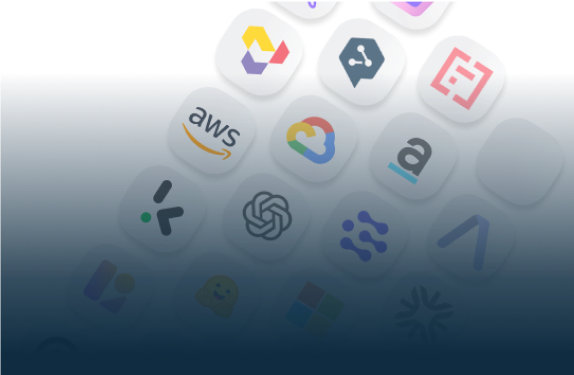
Start Your AI Journey Today
- Access 100+ AI APIs in a single platform.
- Compare and deploy AI models effortlessly.
- Pay-as-you-go with no upfront fees.

Embedding, commonly referred to as text embeddings in NLP (Natural Language Processing), is the act of expressing words or phrases in a high-dimensional numerical vector space. The underlying meaning and semantic connections between words in a text corpus are captured via embeddings. The idea is to map related words to close spots, and unrelated ones to far-off points.

Since they require numerical input, traditional machine learning algorithms and models usually have trouble handling raw text directly. By maintaining semantic similarity while translating words or phrases to high-dimensional vectors, text embeddings solve this problem. In many NLP applications, including text categorization, sentiment analysis, machine translation, and question-answering systems, embeddings are employed.

You can use embeddings in numerous fields, here are some examples of common use cases:
While comparing Embeddings APIs, it is crucial to consider different aspects, among others, cost security and privacy. Embeddings experts at Eden AI tested, compared, and used many Embeddings APIs of the market. Here are some actors that perform well (in alphabetical order):
.png)
Cohere's embedding API excels at processing short texts with under 512 tokens. It employs an approach inspired by Reimers and Gurevych, creating contextualized embeddings for each token and averaging them to ensure even concise texts have comprehensive representations.
For longer texts exceeding the 512-token limit, the API truncates input to fit the maximum context length, accommodating varied text lengths while leveraging its potent embedding capabilities.
Cohere offers three models for monolingual and multilingual tasks, including an English model with 4096-dimensional embeddings.

With the Vertex AI text-embeddings API powered by Generative AI, you can swiftly create text embeddings. These embeddings work seamlessly behind the scenes, whether they're enhancing your Google search, providing personalized shopping recommendations, or suggesting a new music band on your preferred streaming platform according to your music tastes.
The Vertex AI generates embeddings with an output dimension of 768.

Mistral offers a suite of Embedding APIs that provide businesses with advanced capabilities for natural language processing and understanding. These APIs allow organizations to convert text into meaningful numerical representations, known as embeddings, which can be used for a variety of machine learning tasks. By leveraging Mistral's Embedding APIs, businesses can develop sophisticated AI models that excel in tasks such as text classification, sentiment analysis, and more. Mistral's Embedding APIs stand out for their ease of use, robustness, and ability to handle large volumes of data, providing businesses with the tools to leverage language embeddings for enhanced data insights and innovative AI-driven solutions.

NLP Cloud offers an embeddings API based on Multilingual Mpnet Base v2 that enables you to extract embeddings right out of the box with 768-dimensional embeddings.The reaction time (latency) for this model is excellent. You have the option of using the pre-trained model, creating your own custom model, or uploading one yourself. Locally testing embeddings is one thing, but employing them dependably in production is quite another. You may easily accomplish both with NLP Cloud.
.png)
OpenAI strongly recommends their second-gen text-embedding model, ada-002, for top-notch results in various applications. With 1536-dimensional embeddings, it excels in performance, cost-effectiveness, and user-friendliness.
In three prominent benchmarks, these embeddings surpass competitors, boasting a significant 20% improvement in code search. This new endpoint, powered by neural networks inspired by GPT-3, efficiently maps text and code into high-dimensional vectors through "embedding."
These models are commonly used for tasks like text similarity, search, and code search.

Jina's embedding API enables tasks like semantic search, image recognition, and dense retrieval. Their models, such as Jina-Embeddings-V3 and Jina-CLIP-V2, offer high performance with multilingual support for 89 languages and capabilities like 8192 token-length processing.
Jina’s technology outperforms competitors like OpenAI and Cohere on benchmarks such as MTEB (Massive Text Embedding Benchmark). The company provides flexible deployment options on platforms like AWS, Microsoft Azure, and Google Cloud, and emphasizes open-source contributions and cutting-edge research in the AI space.

Embeddings API performance can vary depending on a number of variables, including the technology used by the provider, the underlying algorithms, the amount of the dataset, the server architecture, and network latency. Listed below are a few typical performance discrepancies between several Embeddings APIs:
Companies and developers from a wide range of industries (Social Media, Retail, Health, Finances, Law, etc.) use Eden AI’s unique API to easily integrate Embeddings tasks in their cloud-based applications, without having to build their own solutions.
Eden AI offers multiple AI APIs on its platform among several technologies: Text-to-Speech, Language Detection, Sentiment Analysis, Face Recognition, Question Answering, Data Anonymization, Speech Recognition, and so forth.
We want our users to have access to multiple Embeddings engines and manage them in one place so they can reach high performance, optimize cost and cover all their needs. There are many reasons for using multiple APIs :
Eden AI has been made for multiple AI APIs use. Eden AI is the future of AI usage in companies.

The Eden AI team can help you with your Embeddings integration project. This can be done by :


You can start building right away. If you have any questions, feel free to chat with us!
Get startedContact sales
